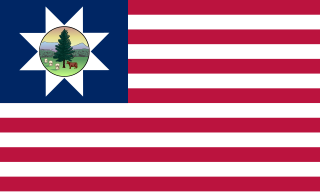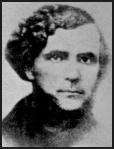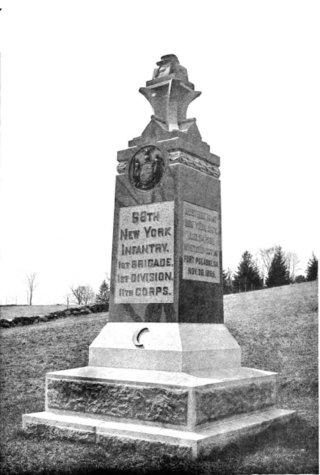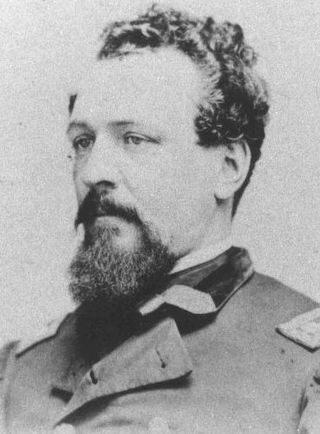
The First Battle of Kernstown was fought on March 23, 1862, in Frederick County and Winchester, Virginia, the opening battle of Confederate Maj. Gen. Thomas J. "Stonewall" Jackson's campaign through the Shenandoah Valley during the American Civil War.

The Battle of Kelly's Ford, also known as the Battle of Kellysville or Kelleysville, took place on March 17, 1863, in Culpeper County, Virginia, as part of the cavalry operations along the Rappahannock River during the American Civil War. It set the stage for Brandy Station and other cavalry actions of the Gettysburg Campaign that summer. Twenty-one hundred troopers of Brig. Gen. William W. Averell's Union cavalry division crossed the Rappahannock to attack the Confederate cavalry that had been harassing them that winter. Brig. Gen. Fitzhugh Lee counterattacked with a brigade of about 800 men. After achieving a localized success, Union forces withdrew under pressure in late afternoon, without destroying Lee's cavalry.

The XI Corps was a corps of the U.S. Army during the American Civil War, best remembered for its involvement in the battles of Chancellorsville and Gettysburg in 1863. The corps was composed primarily of German-American regiments.
The Battle of Chester Station was fought on May 10, 1864, between Union and Confederate forces during the American Civil War. The Confederates attacked portions of Benjamin Butler's Union forces.
The 14th Indiana Infantry Regiment, called "The Gallant Fourteenth," was an infantry regiment and part of the Union Army's celebrated "Gibraltar Brigade" during the American Civil War. Mustered on June 7, 1861, it was the state's first regiment organized for three years' service. The 14th Indiana served in many major campaigns and battles mostly in the Eastern Theater. During its three years of service, the regiment had a total of 222 casualties.

John Randolph Chambliss Jr. was a career military officer from Virginia who served in the Confederate States Army. He reached the rank of brigadier general of cavalry before being killed in action in August 1864 during the Second Battle of Deep Bottom. Born to a lawyer, Colonel and Mrs John Chambliss of Hicksford, Va, John, jr. graduated from West Point (1853) with several future generals, particularly his friend David McGregg, a future Union General as their paths would have an ominous crossing in August 1864.

The 3rd Vermont Infantry Regiment was a three-years infantry regiment in the Union Army during the American Civil War. It served in the eastern theater, predominantly in the VI Corps, Army of the Potomac, from July 1861 to July 1865. It was a member of the Vermont Brigade.
German-Americans were the largest ethnic contingent to fight for the Union in the American Civil War. More than 200,000 native-born Germans, along with another 250,000 1st-generation German-Americans, served in the Union Army, notably from New York, Wisconsin, and Ohio. Several thousand also fought for the Confederacy. Most German born residents of the Confederacy lived in Louisiana and Texas. Many others were 3rd- and 4th-generation Germans whose ancestors migrated to Virginia and the Carolinas in the 18th and early 19th centuries.

Richard Griffith was a brigadier general in the Confederate States Army during the American Civil War. He was mortally wounded at the Battle of Savage's Station during the 1862 Peninsula Campaign. He was one of a number of Confederate generals who were born in the North in Pennsylvania.

St. Clair Augustine Mulholland was a colonel in the Union Army in the American Civil War who later received the brevets of brigadier general of volunteers and major general of volunteers and the Medal of Honor for gallantry in action at the Battle of Chancellorsville.

Julius H. Stahel-Számwald was a Hungarian soldier who emigrated to the United States and became a Union general in the American Civil War. After the war, he served as a U.S. diplomat, a mining engineer, and a life insurance company executive. He received the Medal of Honor for gallantry in action at the Battle of Piedmont in 1864.

The 68th New York Infantry Regiment served in the Union Army during the American Civil War. Also known as the Cameron Rifles or the Second German Rifle Regiment, the men were mostly German immigrants. Organized in July 1861, three months after the outbreak of war, the 68th saw service in the Eastern and Western theaters.
The 67th Ohio Infantry Regiment was an infantry regiment in the Union Army during the American Civil War.
The 36th Arkansas Infantry Regiment (1862–1865) was a Confederate Army regiment during the American Civil War. Originally known as McRea's Emergency Regiment, had been organized as the 28th Arkansas Infantry Regiment. After the Battle of Prairie Grove, the regiment was reorganized and designated the 36th Arkansas Infantry Regiment. The regiment is also referred to as the 2nd Trans-Mississippi Infantry Regiment, Glenn's Regiment, and Davie's Regiment.

The 45th New York Infantry Regiment, also known as the 5th German Rifles, was an infantry regiment that served in the Union Army during the American Civil War. It was composed almost entirely of German immigrants. Formed approximately five months after the start of hostilities, the unit's service spanned almost the entirety of the war, and it saw action in several of the war's noteworthy battles, in both the Eastern and Western Theaters.

James Gwyn was an officer in the Union Army during the American Civil War. He immigrated at a young age from Ireland in 1846, initially working as a storekeeper in Philadelphia and later as a clerk in New York City. At the onset of the war, in 1861, he enlisted and was commissioned as a captain with the 23rd Pennsylvania Volunteer Infantry. He assumed command of the 118th Pennsylvania Regiment in the course of the war. Gwyn led that regiment through many of its 39 recorded battles, including engagements at Seven Pines, Fredericksburg, Shepherdstown, Five Forks, Gettysburg, and Appomattox Court House.
The 75th Regiment Pennsylvania Volunteer Infantry was a unit of the Union Army during the American Civil War. It was composed almost entirely of German-speaking residents of Philadelphia and newly arrived German immigrants. Total enrollment, over the course of the war, was 1,293 officers and men. The 75th Pennsylvania participated in several major battles including Second Bull Run, Chancellorsville, and Gettysburg. The regiment was transferred to the Western Theater in September, 1863. There, it participated in operations in Tennessee, before it was mustered out of service on September 1, 1865, following the close of the war.

The 58th New York Infantry Regiment, also called the Polish Legion, was an infantry regiment of United States Volunteers in Union Army service during the American Civil War. The regiment was composed almost entirely of immigrant volunteers: Poles, Germans, Danes, Italians, Russians, and Frenchmen, most of whom were recruited in New York City in 1861.

Independent Battery F, Pennsylvania Light Artillery, also known as the "Pittsburg Battery", was an artillery battery that served in the Union Army during the American Civil War. Organized in December 1861, the unit first served in the Shenandoah Valley. Battery F fought at Hancock, Winchester, Sulphur Springs, Second Bull Run, Chantilly, and Antietam in 1862. The following year the unit fought at Chancellorsville, Gettysburg, the Bristoe Campaign, and Mine Run. In 1864–1865, Battery F fought at Morton's Ford and served in the garrisons of Washington, D.C., and Harper's Ferry, West Virginia before being mustered out in June 1865. One enlisted man from the battery won the Medal of Honor for heroic action at Gettysburg.

John Albert Koltes was an American colonel of German origin who commanded the 73rd Pennsylvania Infantry Regiment during the American Civil War before being killed at the Second Battle of Bull Run.














